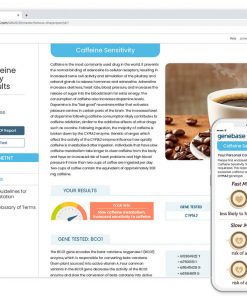DNA Caffeine Sensitivity
Ever wonder if you need to cut back your caffeine intake?
Discover whether you are a fast or slow caffeine metabolizer with the DNA Caffeine Sensitivity Test.
- Genetic variants in the CYP1A2 gene
- “Slow” metabolizers are at increased risk of heart attacks and hypertension
If you already took the DNA Caffeine Sensitivity Test, login to your DNA Access account to access this app.
If you have not taken the DNA Caffeine Sensitivity Test, take the DNA test to access this app.
$149, results in 5 to 7 business days








